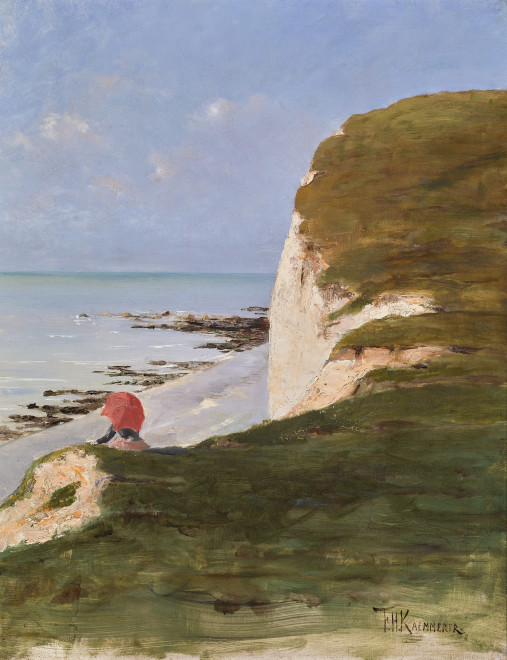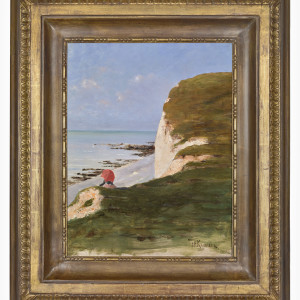The Red Umbrella, with its daring composition and quirky palette shows that the traditional Kaemmerer could also be a modern painter.
Provenance
Possibly Goupil & cie, Paris, 26 September 1892 (no. 22499 as Femme assise sur roche)
Possibly Goupil & cie, New York, 1892
Possibly Julius Eymer, New York, 4 October 1892
Catalogue note
Kaemmerer’s attention to detail in depicting women dressed in fashionable attire (both Directoire and contemporary) earned him much praise in Europe and America. In The Red Umbrella, he used the same exactitude as he ventured into a different subject - landscape painting. While most of Kaemmerer’s beach scenes were painted at Scheveningen in Holland, the white cliffs in The Red Umbrella would seem to indicate that Kaemmerer made his way to the Normandy coast, where he experimented with plein-air painting. Following the development of rail transport, Normandy became a very popular destination for both the Parisian elite and artists in the 19th century. The characteristic white cliffs, indigo ocean and emerald meadows inspired such artists as Gustave Courbet and Claude Monet. The Red Umbrella is Kaemmerer’s own interpretation of this popular plein-air subject, as well as his foray into painting in a more Impressionistic style.
As she stares out at the sea, Kaemmerer’s model becomes dwarfed by her surroundings; clearly the focus of the composition centers on the imposing sunlit cliff and the seascape. However, the vibrant red of the umbrella adds rhythm to the scene and echoes the technique developed by Camille Corot, who would often add a pop of scarlet in the garments of the peasants, who inhabited his landscapes. The Red Umbrella, with its daring composition and quirky palette shows that the traditional Kaemmerer could also be a modern painter.




